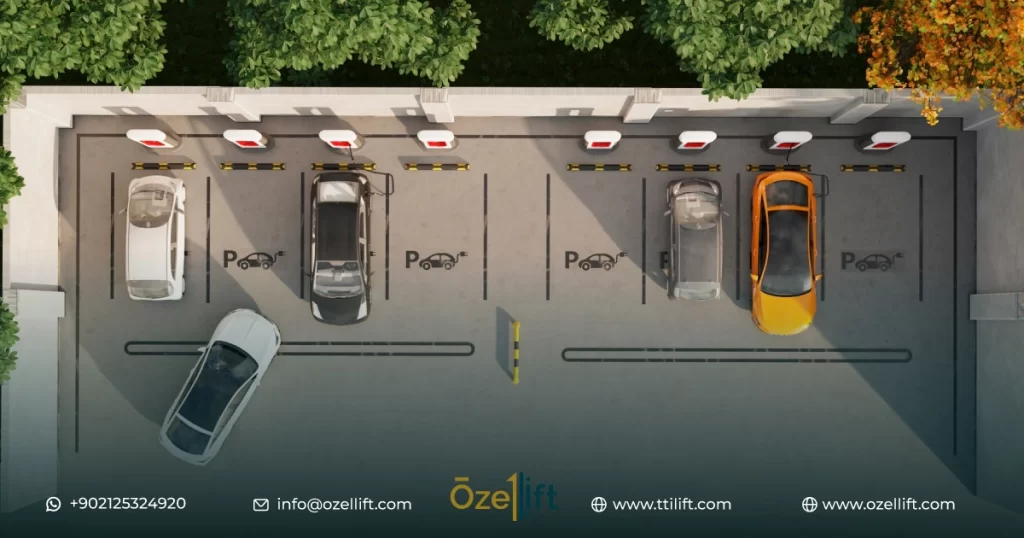Planning to install a home elevator? Understanding home elevator sizes is crucial. Whether you’re considering a compact home lift size or a larger house elevator dimensions, this guide will help. Determining the right fit for your home involves considering factors like space availability, passenger capacity, and desired features.
Let’s explore home elevator sizes in detail to find the perfect solution for your residence.
Standard home elevator sizes
Determining the ideal home elevator size is crucial for ensuring comfort, safety, and functionality.
While there’s no one-size-fits-all answer, understanding standard home elevator sizes can provide a good starting point.
Typical home elevator dimensions vary based on factors like the number of passengers, available space, and local building codes. Common cab sizes range from compact options suitable for one or two people to larger configurations accommodating wheelchairs or multiple passengers.
Let’s delve deeper into the factors influencing home elevator size to help you make an informed decision.
Factors Affecting home lift size
Several factors influence the ideal size of your home lift.
Understanding these elements will help you determine the perfect fit for your residence.
- Number of Passengers: The primary factor is how many people will typically use the elevator. A single or double-person lift might suffice for smaller households, while larger families may require a more spacious option.
- Space Availability: The available area for the elevator shaft is crucial. Measure the space carefully to determine the maximum dimensions that can be accommodated.
- Wheelchair Accessibility: If the elevator needs to accommodate a wheelchair, it’s essential to consider the required dimensions for safe and comfortable use.
- Desired Features: Additional features like seating, mirrors, or handrails can impact the necessary size of the elevator cab.
- Building Codes and Regulations: Local building codes may have specific requirements regarding home elevator dimensions, weight capacity, and safety features.
By carefully considering these factors, you can select a home lift size that perfectly suits your needs and complements your home’s architecture.
Would you like to discuss space requirements for a home elevator? Contact us now.
Space Requirements for a Home Elevator
Determining the necessary space for a home elevator is crucial for successful installation. Several factors influence the required dimensions:
- Elevator Type: Different elevator types have varying space needs.
Pneumatic elevators, for example, often require less space than hydraulic or traction elevators. - Cab Size: The number of passengers and desired features will determine the cab size, which directly impacts the overall space requirement.
- Shaft Dimensions: The elevator shaft must be larger than the cab to accommodate the elevator’s machinery and safety features.
- Pit Depth: The space required beneath the elevator cab varies depending on the elevator type. Pneumatic elevators typically don’t require a pit, while hydraulic and traction elevators often do.
- Overhead Clearance: The space above the top floor must be sufficient for elevator components and safety features.
General guidelines suggest a minimum of 20 to 25 square feet for a home elevator. However, these dimensions can vary significantly based on the factors mentioned above. It’s essential to consult with a professional elevator installer to accurately assess your specific space requirements.
know more about
price of elevator
Home elevators
Common Home Elevator Cab Sizes
The size of your home elevator cab significantly impacts comfort and capacity.
While there are standard dimensions, it’s essential to consider your specific needs and available space.
Typical Home Elevator Cab Sizes
- Compact Cab: Ideal for single or double occupancy, these cabs typically measure around 36 inches by 36 inches (3 feet by 3 feet). They are suitable for smaller homes with limited space.
- Standard Cab: This size accommodates two to three people comfortably. Dimensions often range from 36 inches by 48 inches (3 feet by 4 feet) to 42 inches by 48 inches (3.5 feet by 4 feet).
- Large Cab: For larger families or those requiring wheelchair accessibility, a larger cab is necessary. These cabs typically measure 48 inches by 60 inches (4 feet by 5 feet) or more.
Remember: These are general guidelines, and actual cab sizes can vary depending on the elevator type, manufacturer, and specific requirements.
Shaft house elevator dimensions
The shaft size for a home elevator is crucial as it houses the elevator car and its operating machinery.
While there’s no one-size-fits-all answer, here’s a general overview:
Typical Shaft Dimensions for Home Elevators
- Width: Generally ranges from 4 to 6 feet (1.2 to 1.8 meters).
- Depth: Typically between 4 to 6 feet (1.2 to 1.8 meters).
Note: These are approximate dimensions and can vary significantly based on the elevator’s capacity, the number of stops, and the specific elevator type.
Factors Affecting Shaft Size
- Elevator Capacity: Larger elevators require larger shafts to accommodate the increased weight and space needed for passengers.
- Number of Stops: The distance the elevator travels affects the overall shaft length.
- Elevator Type: Different elevator types have varying space requirements for machinery and safety components.
- Building Codes: Local building codes may impose specific regulations on shaft dimensions and clearances.
It’s essential to consult with a professional elevator installer to determine the exact shaft size needed for your home. They can assess your specific requirements and provide tailored recommendations.
Customizing Your home lift size
One of the significant advantages of home elevators is the ability to tailor them to your specific needs and preferences.
While standard sizes exist, many manufacturers offer customization options to create a truly personalized home lift.
Customization Options
- Cab Size: Adjust the dimensions of the elevator cab to accommodate the desired number of passengers, wheelchair accessibility, or additional features.
- Shaft Size: Customize the shaft dimensions to fit your home’s architecture and available space.
- Door Size and Type: Choose between center-opening, sliding, or telescopic doors to match your aesthetic and functional requirements.
- Interior Finish: Select materials, colors, and lighting to create a luxurious and personalized environment.
- Capacity: Determine the weight capacity based on the intended use, whether for passengers only or transporting items.
Remember: While customization offers flexibility, it’s essential to consider local building codes and regulations to ensure compliance.
By working closely with an elevator installation company, you can design a home lift that perfectly complements your lifestyle and home’s architecture.
Need help determining the perfect home elevator size for your residence? Ozellift offers customized home elevator solutions tailored to your specific needs and preferences. Contact us today for a free consultation and quote.
What factors affect home elevator size?
Factors include the number of passengers, available space, wheelchair accessibility, desired features, and local building codes.
How much space is needed for a home elevator?
Approximately 20-25 square feet is needed for a basic home elevator, but this can vary based on elevator type and features.
Can I customize the size of my home elevator?
Yes, most home elevator manufacturers offer customization options for cab size, shaft dimensions, and interior finishes.



